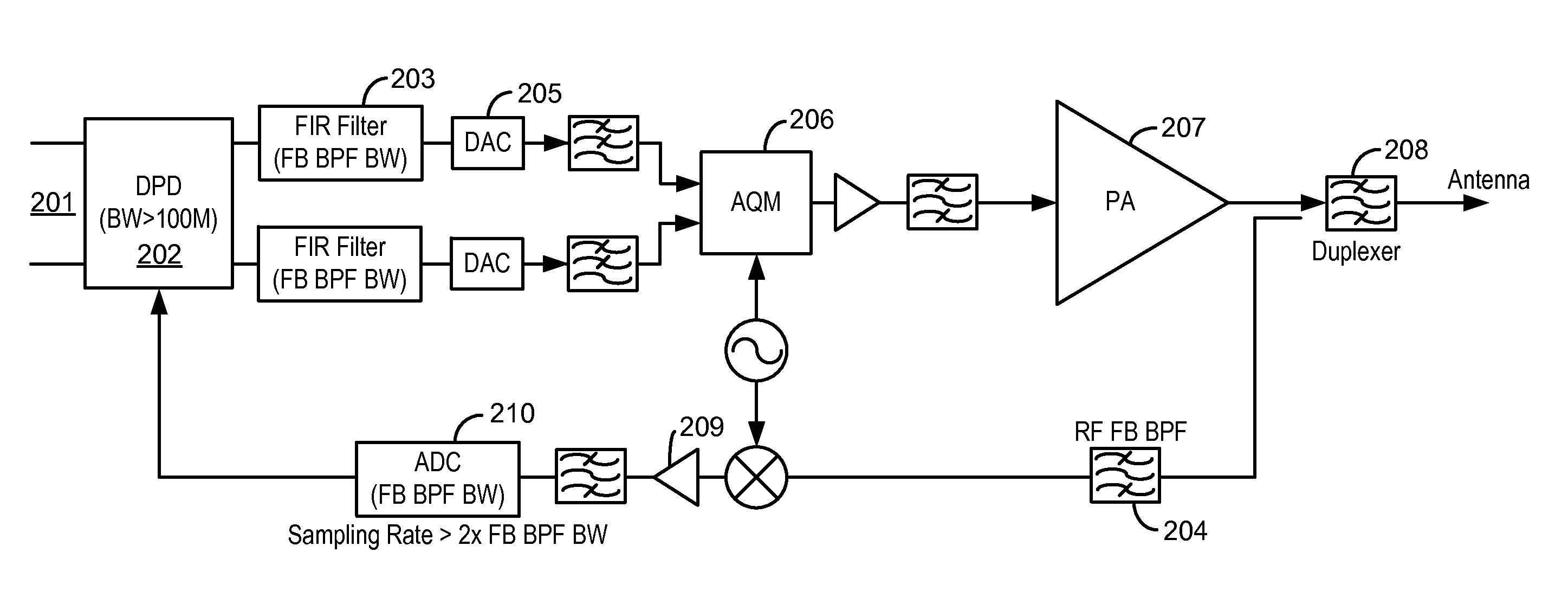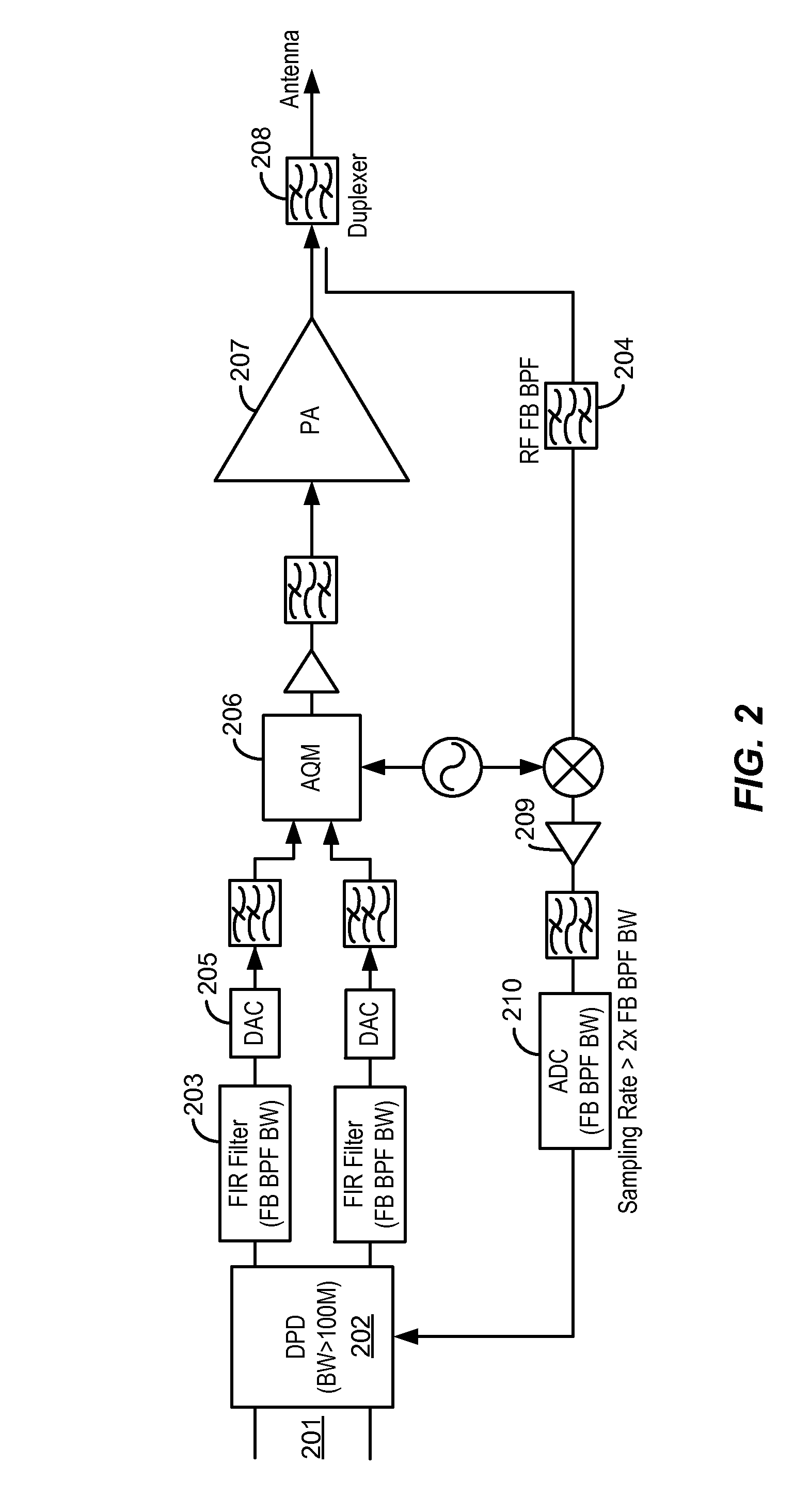Wide bandwidth digital predistortion system with reduced sampling rate
a digital distortion and wide bandwidth technology, applied in the field of wideband communication systems using multiplexing modulation, can solve the problems of increasing system costs, requiring several months and significant staff resources and costs to complete, and new digital platform design efforts, so as to reduce spectral regrowth and in-band distortion effects, improve linearity, and improve power efficiency
- Summary
- Abstract
- Description
- Claims
- Application Information
AI Technical Summary
Benefits of technology
Problems solved by technology
Method used
Image
Examples
Embodiment Construction
[0020]In general, the DPD techniques of the present invention can effectively improve the adjacent channel power ratio (ACPR). However, DPD performance suffers from the limited bandwidth associated with the speed limitation of the ADC employed in the DPD feedback path. This ADC is critical to processing the DPD feedback signals. Although modifying a product design to employ an ADC with a higher sampling rate would likely lead to enhanced DPD performance, that approach would increase the complexity and cost of the DPD function and would therefore result in higher system cost. This is obviously an undesirable approach for meeting new and evolving system requirements. In order to overcome these limitations, the present invention utilizes the bandpass characteristic of the duplexer associated with frequency division duplex wireless systems, so that the DPD is only required to provide distortion reduction over the reduced bandwidth of the PA output signals. The system provided by the pre...
PUM
 Login to View More
Login to View More Abstract
Description
Claims
Application Information
 Login to View More
Login to View More - R&D
- Intellectual Property
- Life Sciences
- Materials
- Tech Scout
- Unparalleled Data Quality
- Higher Quality Content
- 60% Fewer Hallucinations
Browse by: Latest US Patents, China's latest patents, Technical Efficacy Thesaurus, Application Domain, Technology Topic, Popular Technical Reports.
© 2025 PatSnap. All rights reserved.Legal|Privacy policy|Modern Slavery Act Transparency Statement|Sitemap|About US| Contact US: help@patsnap.com



